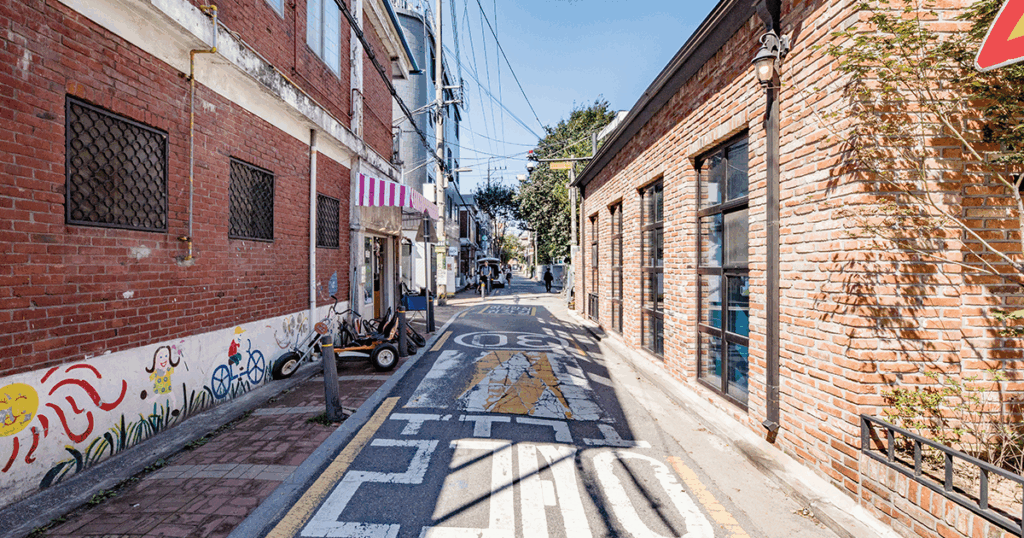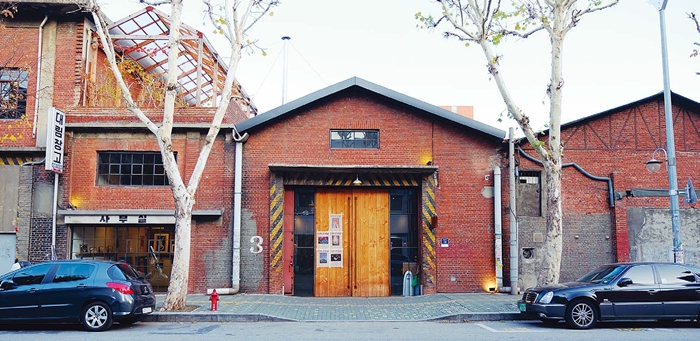What You Can Experience in Trendy Neighborhoods Like Seongsu-dong and Yeonnam-dong—Hotspots for the MZ Generation
1) Where Do MZ Generation Tastes Blossom?
The MZ Generation (Millennials + Gen Z) is known for its openness to new cultures and rapid sharing of information through social media. They are drawn to sensory-rich spaces and meaningful experiences, often seeking out “hotplaces” to share their daily lives. In response, major cities across Korea have seen the rise of trendy districts catering to the interests of this demographic, with unique cafés, restaurants, and curated shops blossoming. This article explores the hotspots of Seongsu-dong and Yeonnam-dong, two standout destinations, revealing what experiences the MZ Generation tends to seek in these areas.
2) Seongsu-dong: From Industrial District to Hip Neighborhood
Just a few years ago, Seongsu-dong evoked images of “clusters of handcrafted shoe factories” and “aging industrial facilities.” However, that changed rapidly as young entrepreneurs, artists, and designers flocked to the area in search of affordable rent and spacious venues. Old factories have been transformed into cafés, studios, and select shops, turning Seongsu-dong into what some now call the “holy land of Seoul’s hipsters.”
As you stroll through Seongsu-dong, you’ll encounter buildings that retain exposed concrete and steel frames on the outside, but house stylishly designed cafés inside. On weekends, various pop-up stores—from fashion labels to lifestyle brands—bring their latest creations to the public. The neighborhood’s blend of “retro and modern” and its unique reimagining of industrial heritage vividly appeals to the aesthetic sensibilities of the MZ Generation.
3) Experiences in Seongsu-dong: Cafés, Galleries, and Studios
One of Seongsu-dong’s defining features is its array of cafés. Venture deep into its alleys rather than sticking to the main road, and you’ll discover hidden gems. In warehouse-style buildings, you’ll find roastery cafés serving specialty coffee, with interiors adorned with vintage furniture and lush indoor plants—perfect for photo ops. Many venues switch up their interior themes seasonally and include dedicated photo zones, adding rich visual interest.
Galleries and art shops are also quickly springing up across Seongsu-dong. You can browse exhibitions at a relaxed pace, or purchase handmade décor and posters by local artists. Studios offering DIY workshops—such as leather crafting, pottery, or floral art—attract many members of the MZ Generation on weekends. These hands-on experiences, set against the district’s eclectic backdrop, inspire endless “new hobby discovery” posts on social media.

4) Yeonnam-dong: Quiet Backstreets Behind Hongdae, Where Sentiment Blooms
While Hongdae is long known as a bustling youth district, the quieter back area of Yeonnam-dong offers a different kind of charm. A mix of residential homes and small businesses, Yeonnam-dong has a peaceful atmosphere with walkable alleys perfect for slow travel. The MZ Generation has infused this quiet neighborhood with creative energy by opening character-rich cafés, dessert spots, and small bars, contributing to the emergence of a unique “Yeonnam-dong vibe.”
As you wander through Yeonnam-dong, you’ll come across pastel-hued shop signs and minimalist interior designs. Many people relax in brunch cafés, gazing out at charming alley views or tasting handmade delicacies like flan and macarons while chatting away. In the evening, cozy lounge bars and craft beer pubs light up, transforming the neighborhood into a serene space for friends and couples to unwind.
5) Signature Attractions of Yeonnam-dong: Markets and Alley Tours
On weekends, Yeonnam-dong hosts small flea markets and art fairs. It’s not unusual to see bookstores, handmade craft stalls, and vintage clothing vendors set up in the front yards of residential homes—adding to the area’s quirky appeal. Street busking and impromptu live performances are also common. One side of Yeonnam-dong’s alleys is home to quiet murals and graffiti, making for perfect hidden photo spots.
Strolling through the alleys, you’ll see a patchwork of global flavors—American bakeries, Mediterranean restaurants, and Japanese donburi spots all nestled together. The location is becoming a go-to “foodie alley,” and many now plan their own “food tour courses” to sample each spot one by one. Most eateries are still independently owned rather than franchise chains, so chances are you’ll enjoy both creative menus and friendly service.

6) Values the MZ Generation Seeks: SNS Sensibility, Self-Expression, and Experience-Centric Living
One big reason the MZ Generation flocks to hotspots like Seongsu-dong and Yeonnam-dong is their desire for self-expression on social media. Images taken at aesthetically pleasing locations—café snapshots, unique dishes—generate many “likes” and help showcase an individual’s lifestyle. But if it were merely about pretty photos, the novelty would quickly wear off. What keeps these spots popular is their ability to offer a complete sensory experience encompassing taste, ambience, and aesthetic richness.
The MZ Generation also values communication and participation. Engaging in conversations with café owners or studio artists, or learning the story behind a handcrafted item at a flea market, adds a level of satisfaction beyond simple consumption. They increasingly favor brands that uphold environmental and social ideals, seeking out places that use recycled or eco-friendly materials. Such ethos aligns well with many businesses in Seongsu-dong and Yeonnam-dong.
7) Visiting Tips for Travelers: Target Quiet Moments Like Weekday Mornings
Given their rising status as hotspots, Seongsu-dong and Yeonnam-dong become crowded on weekend afternoons. Popular cafés and restaurants often have long queues, and packed alleys make it difficult to soak in the atmosphere. To enjoy a more relaxed experience, visit during weekday mornings or later in the afternoon when the crowds thin. These times also offer more opportunities to chat with owners and learn about the area’s background and stories.
While online maps and social media hashtags can guide your search for hidden gems, sometimes getting lost on purpose leads to the most delightful surprises. You might stumble upon a stylish wine bar behind an old steel gate or discover a rooftop café at the top of a hidden stairway. Many explorers now switch off their phone’s GPS and wander intuitively, turning their stroll into a personal treasure hunt through the city.
8) Hidden MZ Hotspots Beyond Seongsu-dong and Yeonnam-dong
Seongsu-dong and Yeonnam-dong aren’t the only MZ Generation hotspots. Similar scenes are emerging across Korea—in places like Haeundae and Seomyeon in Busan, the Kim Gwang-seok Street area in Daegu, Yangnim-dong in Gwangju, and Gyeongridan-gil in Jeonju. What they share are clusters of unique businesses and atmospheres perfect for leisurely walks, along with highly “Instagrammable” food and décor.
What’s more, international visitors curious about Korea’s latest cultural trends often explore Seongsu-dong and Yeonnam-dong for a taste of K-café and K-design culture. While locals welcome this interest, concerns about gentrification—such as rising rents and displacement of original residents—have surfaced. As such, it’s important to recognize both sides of hotspot culture and move toward sustainable, balanced development.
9) Collaborations and Pop-up Shops: The Allure of Limited Editions
Limited edition releases and pop-up shop events are another major attraction for the MZ Generation. In Seongsu-dong and Yeonnam-dong, brands—ranging from fashion and food to famous illustrators—host pop-up stores operated for limited times only. These attract waves of fans eager to purchase exclusive collaboration items. It’s now common to see long lines of people waiting to snap real-time photos and share them instantly on social media.
These pop-ups go beyond mere shopping experiences. Often resembling theme parks, they include interactive promotions like mini-missions or giveaways. The MZ Generation thrives on being able to “share unique experiences,” quickly propelling them through viral social media posts. From sneaker brand events in Seongsu-dong to dessert-themed pop-ups in Yeonnam-dong, these limited-time happenings are eagerly anticipated must-visits.
10) Conclusion: Urban Vitality Shaped by the MZ Generation
The appeal of Seongsu-dong and Yeonnam-dong lies not merely in their aesthetic or hip stores. Rather, they represent how young creators and consumers have reinterpreted urban spaces through fresh perspectives, building vibrant communities through dialogue and creativity. The values held by the MZ Generation—individuality, emotional depth, eco-consciousness, and self-expression—are breathing life into entire districts, turning them into dynamic cultural hubs.
This movement shows no signs of slowing. Influencer marketing, brand collaborations, and creative pop-up events spread rapidly via social media, allowing new neighborhoods to rise as the next “hotplaces.” At the same time, increasing calls for development that respects local identity and community well-being are also being heard. Ultimately, places that understand MZ preferences and offer compelling stories and experiential value will shape the future of urban culture.
For travelers and residents alike, the key is to go beyond just taking Instagram photos at hotplaces like Seongsu-dong and Yeonnam-dong. By diving deeper into the area’s history, people, and individual storefronts, your experience becomes more meaningful—potentially expanding your worldview and enriching your lifestyle. New cafés, studios, and pop-ups are always emerging, so step into the alleyways on a quiet weekday afternoon. A world of exciting experiences crafted by the MZ Generation awaits.


WeBring Service : Provides personalized services to foreigners living in Korea
Exclusive offer: Introducing foreign car rental in Korea, WeBring-SoCar

